The “mini” 747
Note
Five screenshot to represent the ugly design of tuis aeroplane
The plane in the custom thumbnail is a pre-release version
ATL-98 Carvair
The Aviation Traders ATL-98 Carvair was a large transport aircraft powered by four radial engines. It was a Douglas DC-4-based air ferry conversion developed by Freddie Laker's Aviation Traders (Engineering) Limited (ATL), with a capacity generally of 22 passengers in a rear cabin, and five cars loaded in at the front.
Freddie Laker's idea to convert surplus examples of the Douglas DC-4 and its military counterpart the C-54 Skymaster to carry cars was a relatively inexpensive solution to develop a successor to the rapidly aging and increasingly inadequate Bristol 170 Freighter, the car ferry airlines' mainstay since the late 1940s.
The Bristol Freighter's main drawback was its limited payload, in terms of the number of cars that fitted into a single aircraft. Even the "long-nosed" Mark 32 was able to accommodate only three cars (in addition to 20 passengers). This made carrying cars by air a very tricky business. If a booked car failed to turn up, the flight instantly became unprofitable as a result of the one-third cut in payload. This situation was made worse by the increasing average length of British cars during the 1950s. The average UK car in 1959 was 25 centimetres (9.8 in) longer than in 1950. The extreme seasonality of the car ferry business furthermore resulted in poor aircraft utilization outside peak periods. Moreover, repeated takeoffs and landings on short cross-Channel flights, in turbulent air at lower altitudes with tight turnarounds of as little as 20 minutes, made the aircraft prone to structural fatigue problems. These necessitated rigorous and costly modification programmes, thereby further increasing the type's operating costs on what were essentially low-yield routes.
When the major airlines replaced their obsolete piston airliners with new Boeing 707 and Douglas DC-8 jets on their prestige long-haul routes, the unit price of second-hand DC-4s dropped to as little as £50,000 (equivalent to £1.2 million today). The conversion of each of these airframes into car-passenger carriers cost about £80,000 (£1.9 million today). This was easily affordable by smaller airlines, such as the car ferry companies. Freddie Laker's cardboard model of a converted DC-4 featuring a door in the nose and a flight deck raised above the fuselage had shown that its payload was superior to the Bristol Freighter/Superfreighter. The aircraft was designed to accommodate five average-sized British cars plus 25 passengers as a result of the DC-4's longer and wider fuselage. British Air Ferries (BAF), for example, operated its Carvairs in a flexible configuration, either accommodating five cars and 22 passengers or two-three cars and 55 passengers, permitting it to change over from one configuration to the other in about 40 minutes. In addition, the DC-4's lack of pressurisation made it ideal for low-altitude cross-Channel flights that did not go high enough to require a pressurised cabin. This made the proposed structural conversion straightforward. The result was a new aircraft christened Carvair (derived from car-via-air).
Initially, it was thought that second-hand, pressurised Douglas DC-6 and Douglas DC-7 airframes could be converted into larger, "second generation" Carvairs within 15 years of the original DC-4-based Carvair's entry into service.[4]
The conversion of the original aircraft entailed replacing the forward fuselage with one 8 feet 8 inches (2.64 m) longer, with a raised flightdeck in a bulbous "hump" (akin to the later Boeing 747) to allow a sideways hinged nose door. It also entailed more powerful wheel brakes and an enlarged tail, often thought to be a Douglas DC-7 unit, but actually a completely new design. The engines, four Pratt & Whitney R-2000 Twin Wasps, were unchanged.
The prototype conversion first flew on 21 June 1961. Twenty-one Carvairs were produced in the UK, with production of aircraft 1, 11 and 21 at Southend Airport and the balance at Stansted Airport. The final three aircraft were delivered to Australia's Ansett-ANA, which supplied its own DC-4s to ATL for conversion, unlike the previous 18 aircraft that were purchased by ATL and either sold on or transferred to associate company British United Air Ferries (BUAF). One of the two aircraft still flying in June 2007 was an ex-Ansett airframe. A second Ansett aircraft was abandoned at Phnom Penh in 1975. The first flight of the last conversion, number 21, for Ansett, was on 12 July 1968.
Basic price for a newly converted Carvair in 1960 was £150,000 (equivalent to £3.5 million today), and based on the use of a C54 airframe, whilst only two of the three Ansett airframes supplied were of the DC4 variant.
Controls
VTOL: flaps
AG2+trim up: nose cargo dorr
Gallery


Thank you for dwnlod and upvooooooooooote
Specifications
Spotlights
- ayou2005 4.1 years ago
General Characteristics
- Created On Android
- Wingspan 101.3ft (30.9m)
- Length 89.8ft (27.4m)
- Height 26.1ft (7.9m)
- Empty Weight 39,419lbs (17,880kg)
- Loaded Weight 58,367lbs (26,475kg)
Performance
- Horse Power/Weight Ratio 0.256
- Wing Loading 41.1lbs/ft2 (200.7kg/m2)
- Wing Area 1,420.0ft2 (131.9m2)
- Drag Points 27511
Parts
- Number of Parts 145
- Control Surfaces 13
- Performance Cost 837

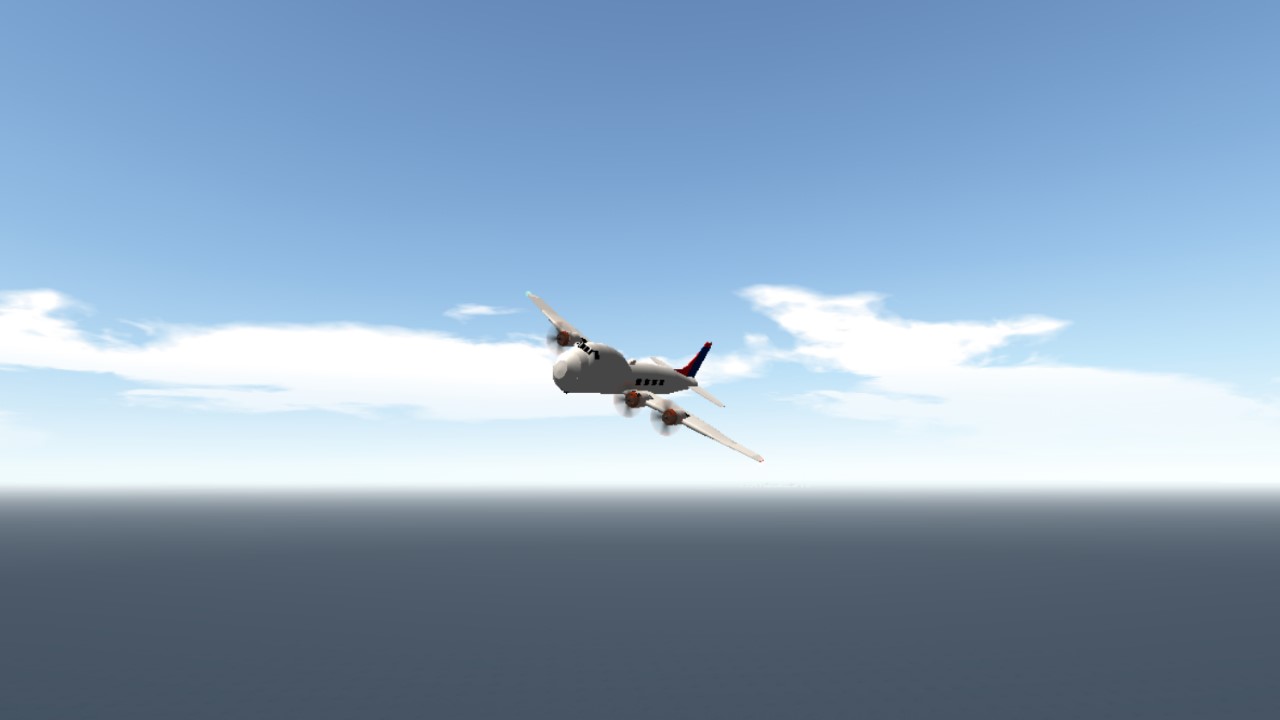
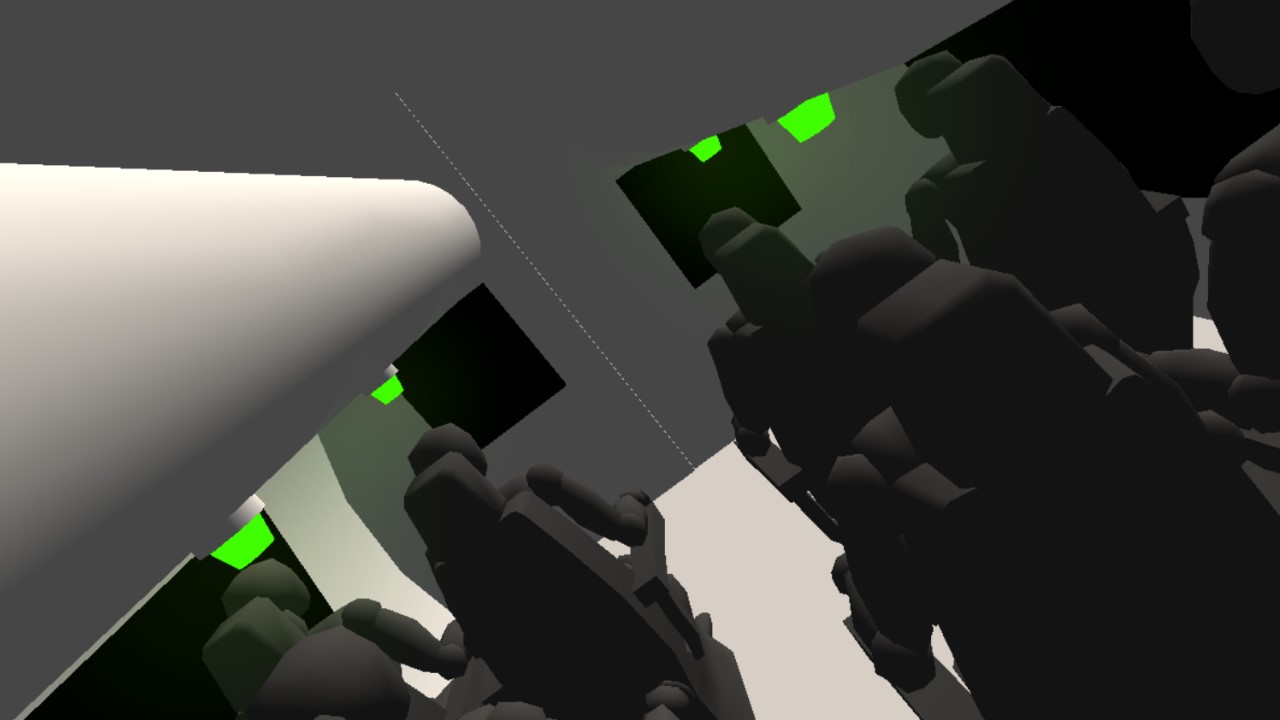
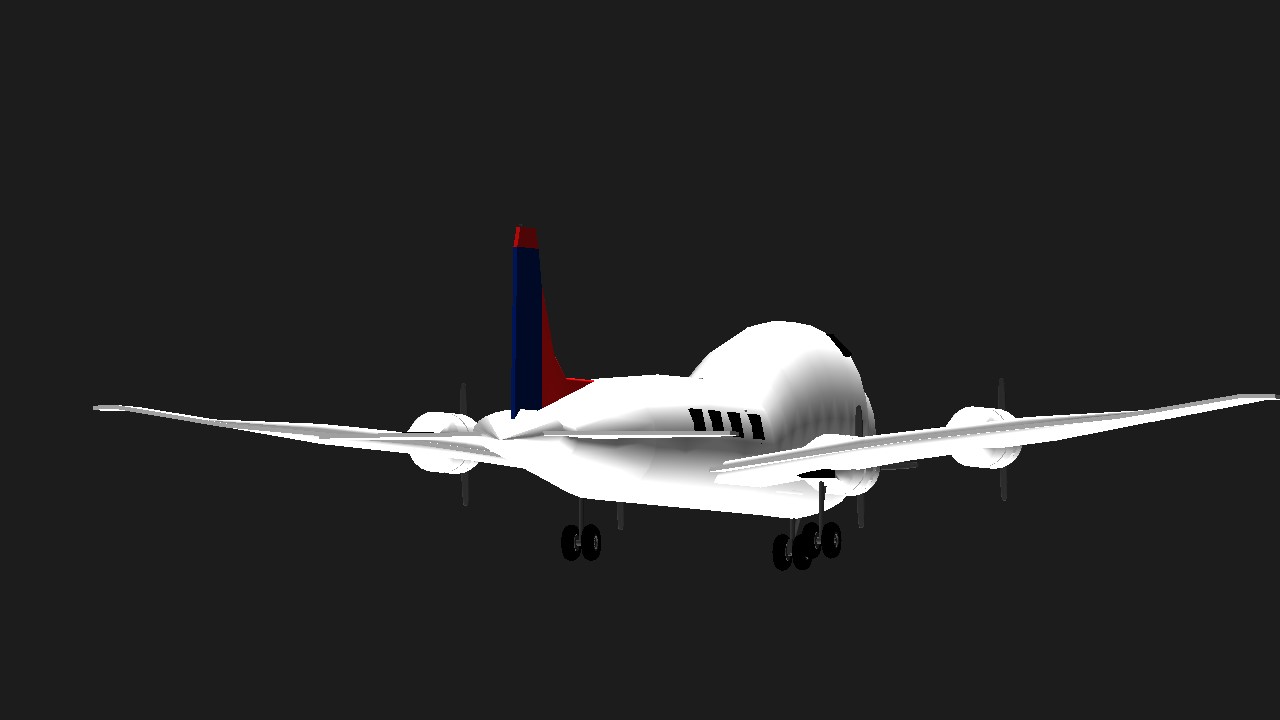
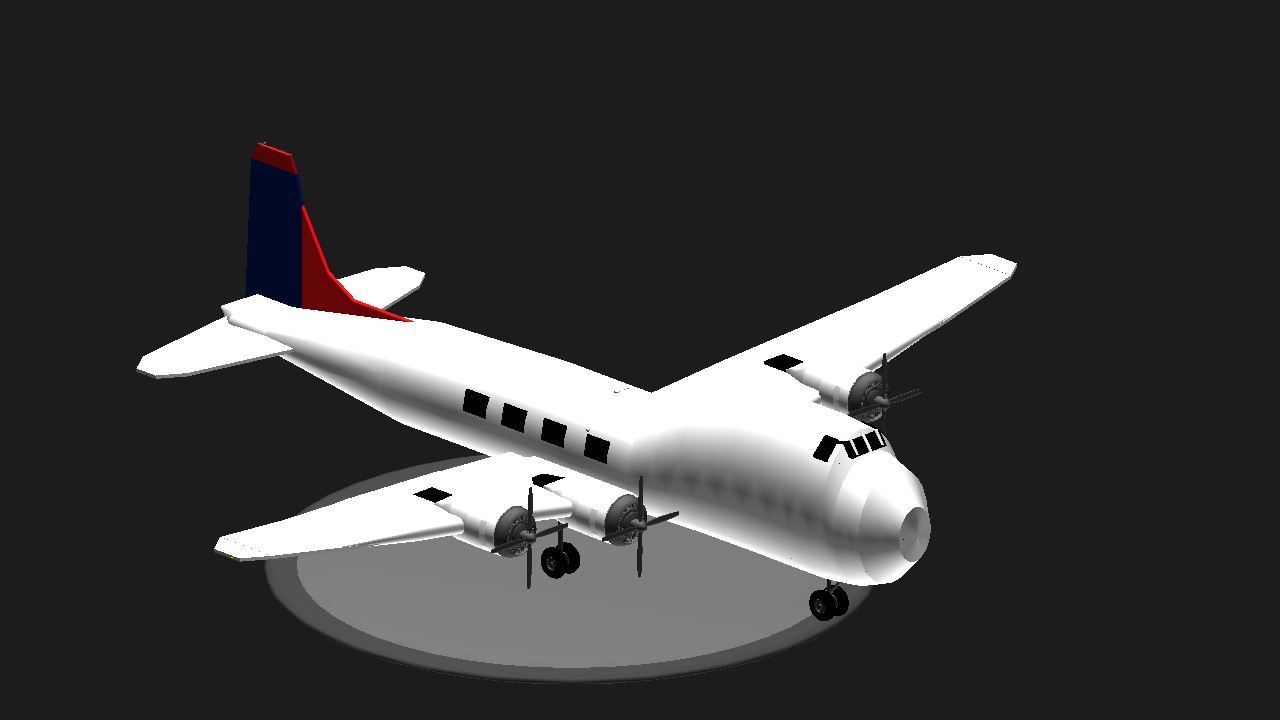
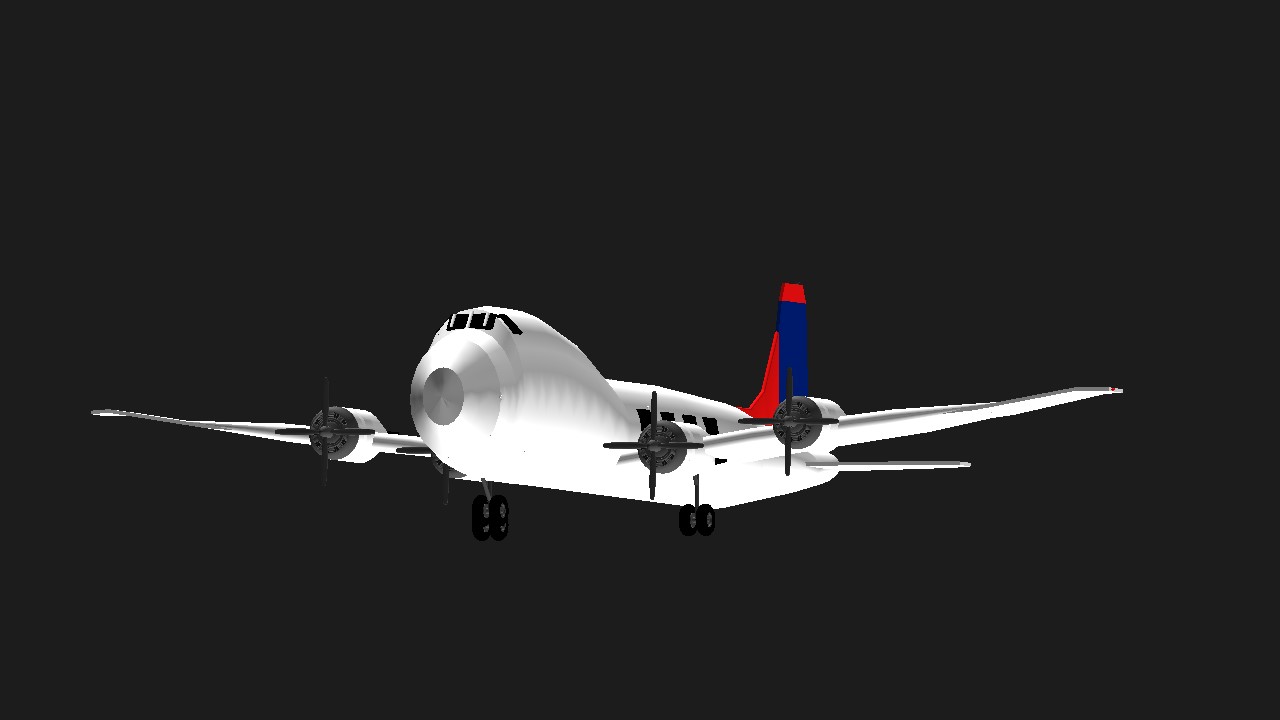
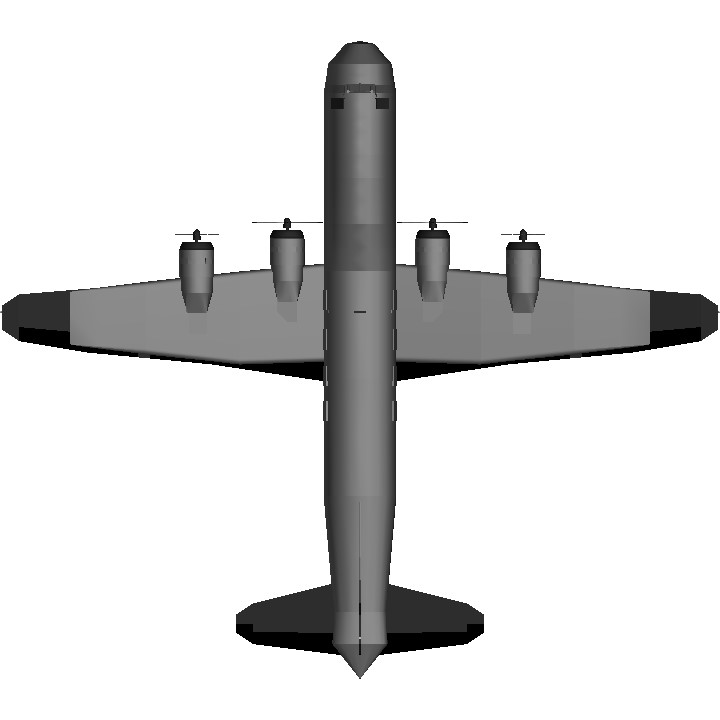
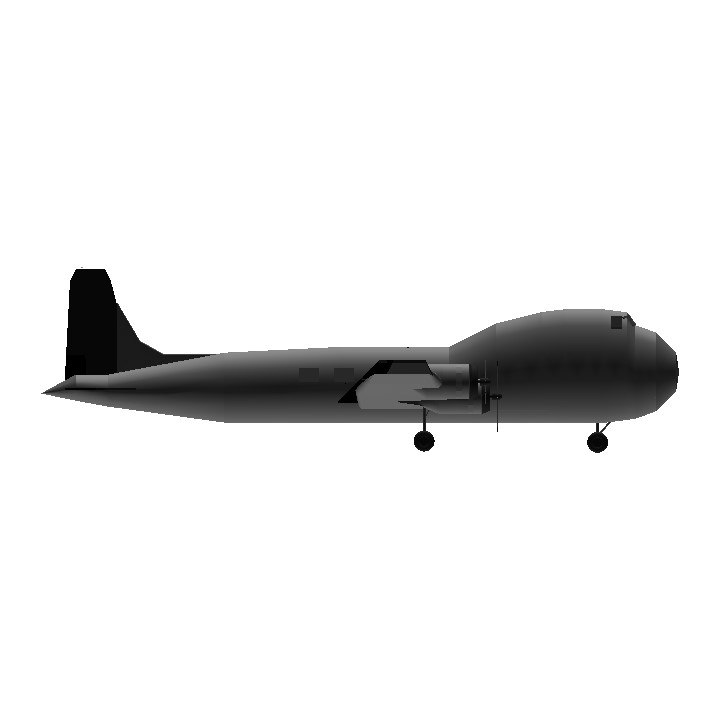
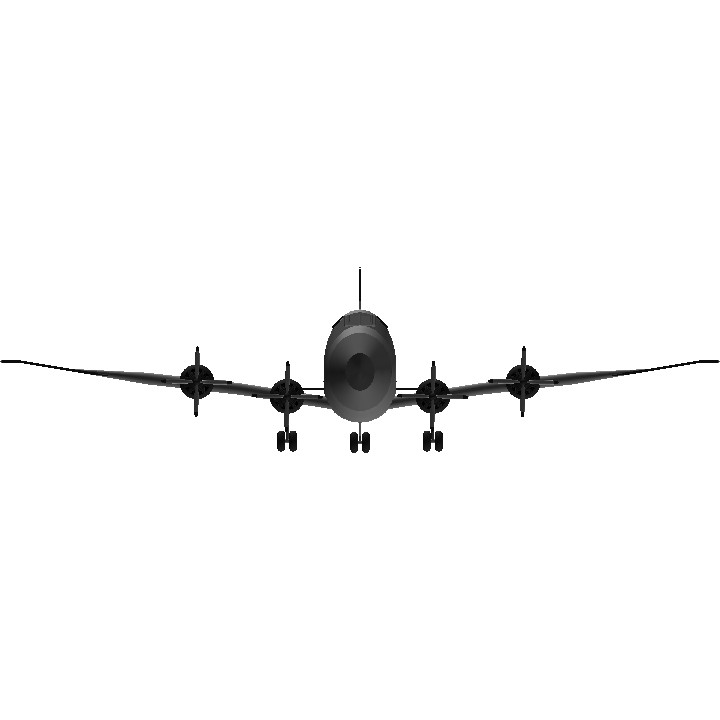
I love it I was looking for someone who made simple aircaft
Ada 1 impostor
747 but malnourished